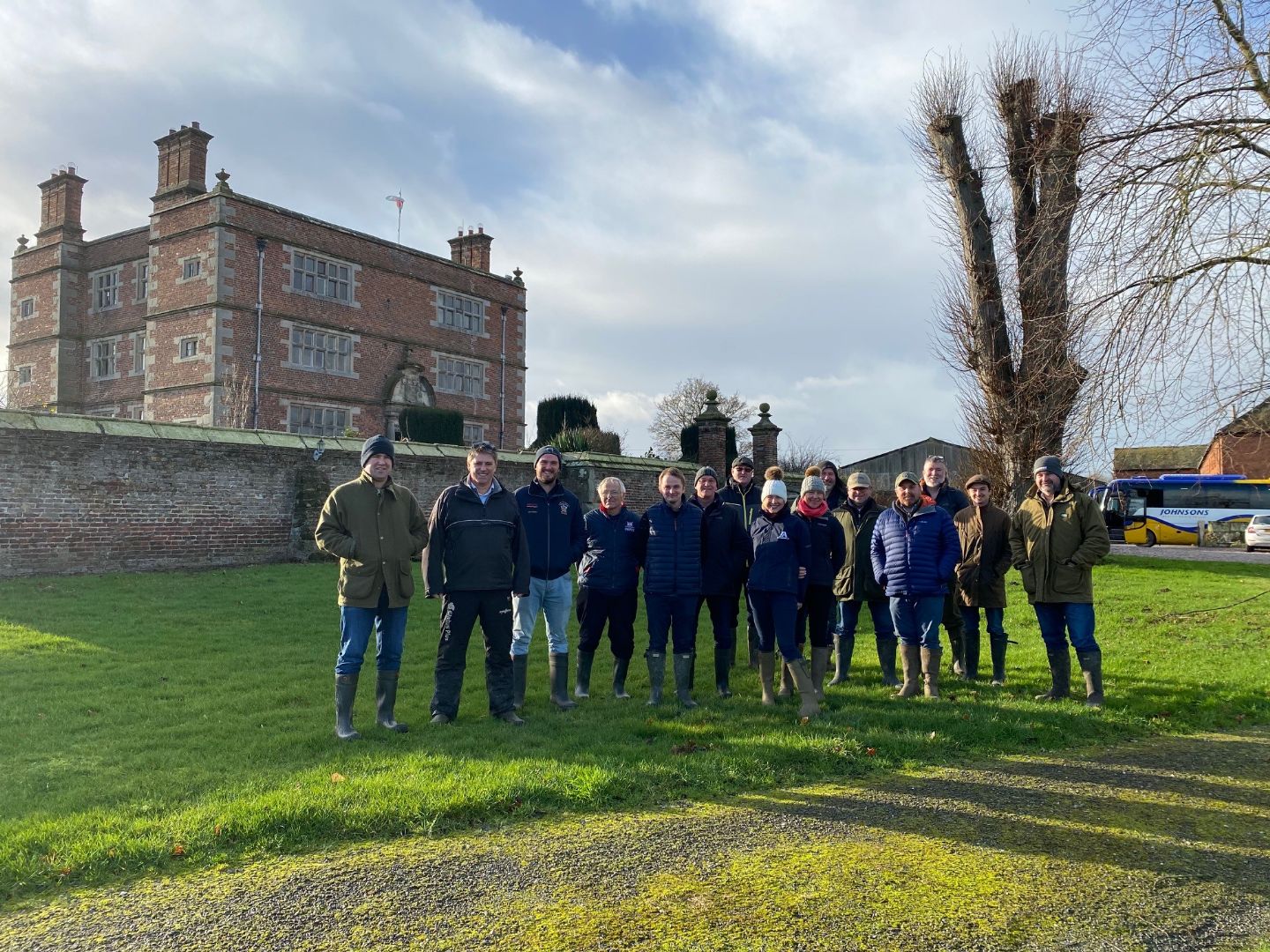
On the Wednesday 11th January the members of the Innovation for Agriculture Community of Practice project met for a two-day study tour to explore diversification options, conservation agriculture and what a farm business of the future will look like.
Farm diversification
The tour began with a visit to Soulton Hall in Shropshire, for a farm walk led by Tim Ashton, who shared how in recent years the farm has implemented some unusual diversification projects. These included opening an outdoor theatre to provide an outdoor space for performances during the period when Covid-19 restrictions were easing but indoor events were not yet an option. The farm was able to earn a supplementary income while supporting local culture during a time which was difficult for most, particularly those in the performing arts sector.
The farm walk also included visiting a long barrow, which was built as part of a shared project with Sacred Stones. The long barrow provides a peaceful space to honour loved ones by the placing of urns. It revived a practice of long barrow building which was first developed by farmers in the late Stone Age, and included work from local artists, such as painting stained glass. Tim shared how the long barrow project has provided something for the community, while providing a diversified income for the farm too.
As well as focusing on diversification, the farm walk also explored the various farming systems on the estate, including cover cropping and strategies to maintain and improve soil health on the farm. Tim shared how his diverse mix of soils, which include a lowland peat, has meant different approaches are needed for cultivating different fields, stressing the importance of knowing your soils and how to manage them. Since going no-till, issues with surface water on low lying fields have vastly reduced as water holding capacity in the soils has improved.
Conservation agriculture
Following the farm walk, PhD student Joe Collins, from Harper Adams University, presented his research which is comparing conservation agriculture systems to their conventional equivalent. He highlighted that often the information coming from academic research is of limited use to farmers, because only one aspect is changed in experiments, with everything else staying the same. In reality, farming according to regenerative or conservation agriculture principles requires changing several things compared to a conventional system. In Joe’s field trials, strips in the same two fields are being managed by two different agronomists, Paul Cawood from Spunhill, for the conservation agriculture system, and Alistair Sibbett from BCW for the conventional system. The crop rotations are being kept the same, so they can be compared, but the agronomists have free reign to manage the crops as they would recommend to a farm client.
The project is one year in, and is anticipated to run for at least three years in total. The first crop in the rotation was field beans, which is being followed by winter wheat. For every crop Joe is measuring yield, but also analysing the economics of the management decisions to understand the profitability of each system. It will be interesting to see future results coming from this project.
A farm business of the future
Day two of the study tour was made up of a workshop run by Martin Collison from Collison and Associates Limited.
In the workshop Martin focused on what to consider when looking at generating new income for a farm business. This included:
- Knowing your objective and what you’re trying to achieve
- Diversification vs specialisation
- The skills you and your team have, as skills and business growth go hand-in-hand
- Working alone or in a partnership
- How to access funding
Within the workshop Martin explored where the opportunities are in the food chain. He shared that agriculture’s share in Gross Value Added (GVA) in the food chain has remained between 7.6% and 9.4% in the last decade, whereas in 1998 it was 11.5%. He suggested there may be opportunities to increase UK production of certain foods, for example where Brexit has resulted in importing of the food becoming more expensive. He also highlighted how Covid has rekindled consumer interest in ‘local food’ and how diversifications tapping into a local market via delivery, vending or by creating a destination food market can add value.
The workshop also covered non-food income streams, such as energy income or cost control, property income streams and rural tourism. The various environmental income streams available to farmers were also explored. These include:
- Carbon markets
- Biodiversity and Biodiversity Net Gain – early stage emerging markets
- Water management
- ELMS and Countryside Stewardship
Martin finished by sharing that when it comes to choosing a strategy to diversify farm business incomes, there is no one ‘right’ answer. He recommended looking for ways to stack income that will work for your farm business, depending on factors such as skills, location and what you enjoy doing, as any sort of diversification has a high time requirement when it comes to getting it off the ground.




